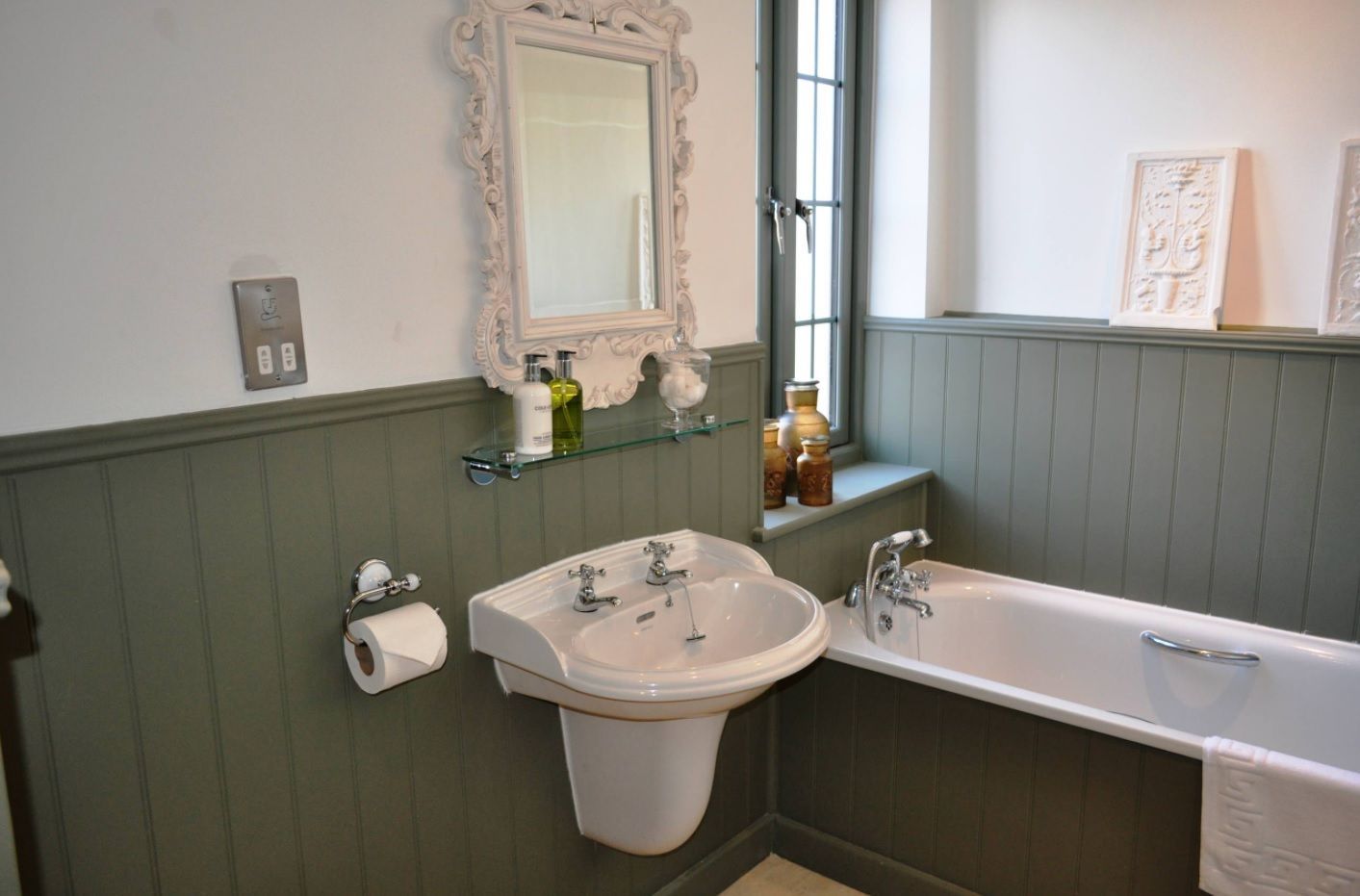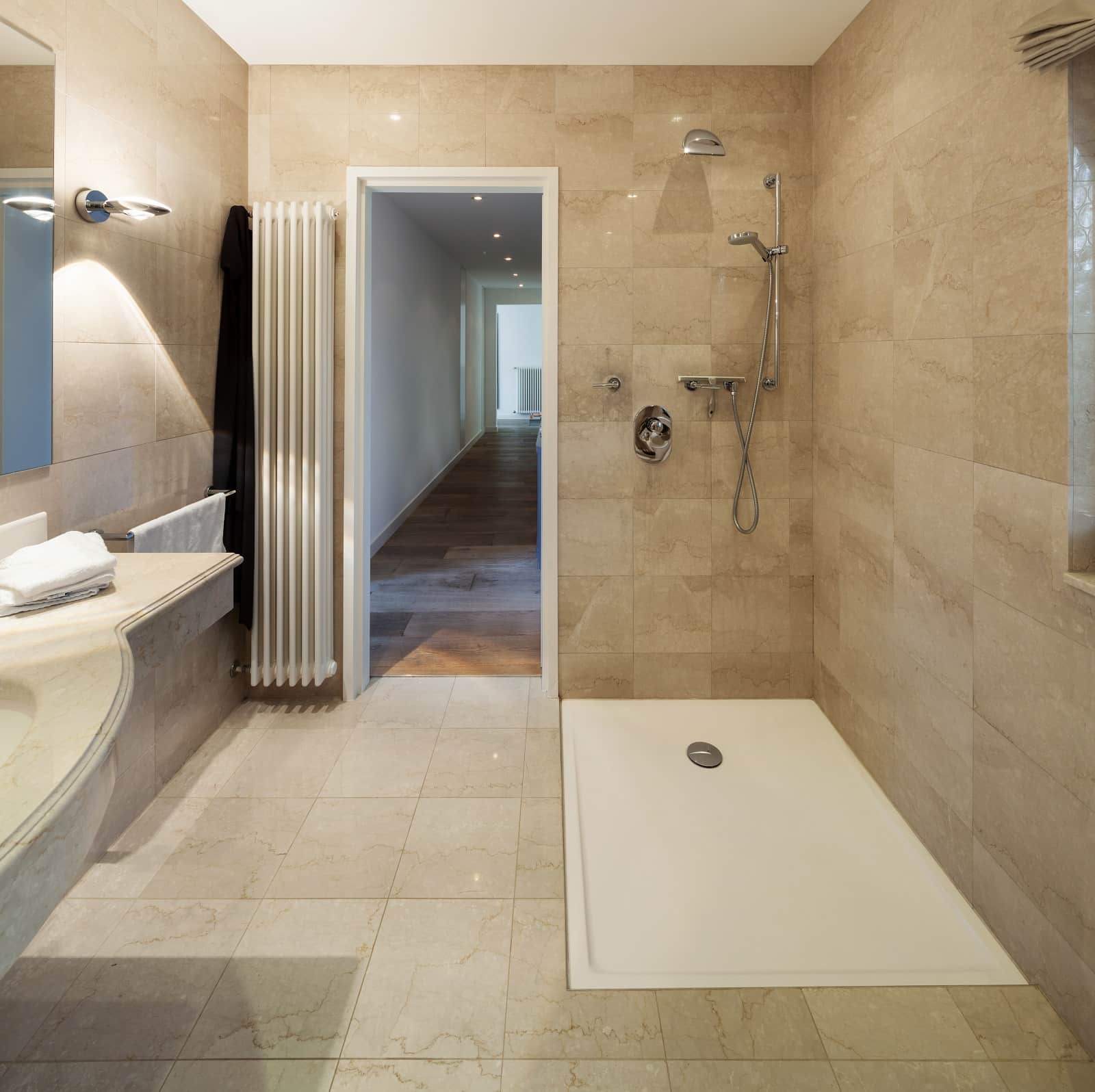The Allure of Wainscoting in Small Bathrooms

Transforming a small bathroom into a haven of elegance and functionality can be a challenge, but wainscoting emerges as a powerful design element that can elevate the space’s aesthetic appeal and create an illusion of grandeur. This architectural feature, which typically involves paneling the lower portion of the walls, offers a myriad of benefits for small bathrooms, making it a popular choice among homeowners and interior designers alike.
Visual Expansion and a Sense of Grandeur
Wainscoting plays a remarkable role in visually expanding a small bathroom, making it appear larger and more spacious. The horizontal lines created by the panels draw the eye across the room, creating a sense of width. This effect is further enhanced when the wainscoting is painted in a light or neutral color, which reflects light and brightens the space. The use of wainscoting can also make a small bathroom feel more grand and sophisticated. The paneling adds architectural interest and depth to the walls, creating a more luxurious ambiance.
Elevating Style and Sophistication
Wainscoting can effortlessly elevate the style of a small bathroom, transforming it into a more sophisticated and luxurious space. Its ability to add a touch of architectural detail can create a sense of refinement and elegance that is often lacking in small bathrooms. The choice of wainscoting style can significantly impact the overall aesthetic of the bathroom.
Different Wainscoting Styles
- Traditional Wainscoting: Characterized by its classic and timeless design, traditional wainscoting typically features flat panels with simple moldings. This style is perfect for creating a classic and elegant ambiance in a small bathroom.
- Modern Wainscoting: Modern wainscoting embraces clean lines and minimalist design, often featuring geometric patterns or sleek, contemporary moldings. This style is ideal for creating a modern and sophisticated look in a small bathroom.
- Farmhouse Wainscoting: Farmhouse wainscoting often features rustic elements, such as beadboard panels, shiplap, or distressed wood. This style can add a touch of warmth and charm to a small bathroom.
Maximizing Space with Wainscoting

In a small bathroom, the right wainscoting design can be a game-changer. It can not only add a touch of elegance but also visually enhance the space, making it feel larger than it actually is. This is achieved by playing with colors, lines, and strategically placed panels.
Choosing the Right Wainscoting Height
The height of the wainscoting is crucial in a small bathroom. A higher wainscoting can make the space feel cramped, especially if the ceilings are low.
- A good rule of thumb is to keep the wainscoting height at or below half the height of the wall. This creates a sense of balance and prevents the space from feeling overwhelmed.
- Consider using a taller wainscoting only on one wall, such as the wall behind the sink or bathtub, to add a focal point. This creates a sense of depth and interest without making the entire space feel too small.
Creating the Illusion of Space
The use of color and lines in wainscoting can significantly impact how a small bathroom feels.
- Light colors, such as white, cream, or pale gray, can make a small bathroom feel larger and brighter. They reflect light, creating a sense of spaciousness.
- Vertical lines, created by using wainscoting panels that run from floor to ceiling, can visually elongate the space. This makes the room feel taller and more spacious.
- Horizontal lines, created by using wainscoting panels that run across the wall, can make a room feel wider. However, in a small bathroom, horizontal lines can make the space feel shorter, so use them sparingly.
Incorporating Wainscoting Around Fixtures
Strategically placed wainscoting can enhance the visual flow of a small bathroom, making it appear more organized and spacious.
- Wainscoting around the toilet can help to define the space and make it feel more separate from the rest of the bathroom. This is especially helpful if the toilet is in a corner or close to other fixtures.
- Wainscoting around the bathtub can create a spa-like feel and make the bathtub area feel more luxurious. This is a great way to add visual interest to a small bathroom without overwhelming the space.
- Wainscoting around the sink area can help to create a sense of order and organization. This is especially helpful if the sink is in a small or cramped space.
Designing a Small Bathroom with Wainscoting: Small Bathroom Designs With Wainscoting
Transforming a small bathroom into a haven of style and functionality is an exciting challenge. Wainscoting, with its timeless elegance and practical benefits, can play a crucial role in achieving this. This section provides a step-by-step guide to designing a small bathroom with wainscoting, encompassing material selection, color palettes, and accessory choices, along with layout examples and a detailed design concept.
Choosing the Right Materials, Small bathroom designs with wainscoting
Selecting the right materials for your wainscoting is essential for both aesthetics and durability.
- Traditional Wood Wainscoting: This classic choice exudes warmth and sophistication. Popular wood options include oak, maple, cherry, and pine, each offering distinct grain patterns and color variations.
- Modern Alternatives: For a contemporary look, consider materials like PVC, MDF, or composite panels. These are water-resistant, easy to clean, and come in various finishes, including faux wood grain.
- Tile Wainscoting: Ceramic or porcelain tiles offer durability, moisture resistance, and endless design possibilities. You can choose from classic subway tiles, intricate mosaics, or large-format tiles for a bold statement.
Selecting the Perfect Paint Colors
Color plays a significant role in creating the desired ambiance.
- Light and Airy: Opt for light neutrals like white, cream, or soft gray to visually enlarge the space and create a sense of openness.
- Warm and Inviting: Introduce warm tones like beige, pale yellow, or soft peach for a cozy and welcoming feel.
- Bold and Statement: For a dramatic effect, consider a darker accent wall with wainscoting in a contrasting color. This can add visual interest and define the space.
Incorporating Wainscoting for Optimal Space and Functionality
Wainscoting can be strategically incorporated to enhance both space and functionality.
- Vertical Wainscoting: Installing wainscoting vertically can visually elongate the walls, making the room appear taller.
- Horizontal Wainscoting: Horizontal wainscoting creates a sense of width, expanding the visual perception of the space.
- Accent Walls: Highlight a specific area, such as behind the vanity or the bathtub, with wainscoting to create a focal point and add visual interest.
Example Bathroom Layouts with Wainscoting
Visualizing how wainscoting can transform a small bathroom is crucial. Here are two examples:
- Small Bathroom with a Shower Stall:
- Wainscoting can be installed around the shower stall, creating a visually appealing and functional enclosure.
- Consider using a contrasting color for the wainscoting around the shower to create a focal point.
- The remaining walls can be painted in a light neutral color to maximize space.
- Small Bathroom with a Tub:
- Wainscoting can be used to create a decorative backdrop for the bathtub, adding visual interest and enhancing the space’s elegance.
- Consider using a horizontal wainscoting pattern to create a sense of width around the bathtub area.
- The remaining walls can be painted in a complementary color to create a cohesive look.
Small Bathroom Design Concept Featuring Wainscoting
- Layout: A compact bathroom with a shower stall, a floating vanity, and a small linen closet.
- Wainscoting: White subway tiles installed horizontally around the shower stall, creating a clean and modern look.
- Paint Colors: The remaining walls are painted in a soft gray, offering a sense of calm and sophistication. The ceiling is painted white to maximize light reflection.
- Accessories: A sleek, chrome showerhead, a mirrored medicine cabinet, and chrome towel bars complete the modern design.
- Lighting: Recessed LED lights are installed in the ceiling for a clean and contemporary look, providing ample illumination.
- Flooring: Large-format porcelain tiles in a light gray tone create a seamless transition between the shower area and the rest of the bathroom.
